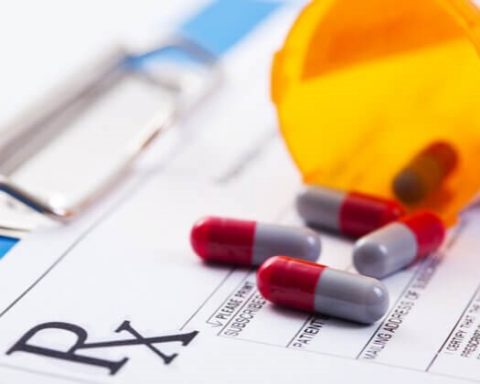Are you a recipient of Medicare benefits with limited income and assets? If so, you may qualify for ‘Extra Help’ to lower the costs of your prescription drugs.
While Original Medicare covers hospital and medical expenses, it doesn’t include prescription drug coverage. To secure, you must either purchase a Medicare Part D plan or a Medicare Advantage plan (Part C) that includes prescription drug coverage.
Even with a Medicare Part D plan, you are liable for monthly premiums and potential out-of-pocket expenses such as deductibles, copayments, and coinsurance. For those who are unable to afford these costs, exploring ‘Extra Help’ is advisable.
What is the Medicare Extra Help Program?
The Medicare Extra Help program, also known as the Part D Low Income Subsidy (LIS), is a federal initiative designed to assist individuals with restricted financial means by lowering or completely covering expenses associated with Medicare Part D.
This program covers premiums, deductibles, copayments, and coinsurance through the provision of either full or partial subsidies. A full subsidy means beneficiaries need not pay anything for their prescription drug coverage.
Administered collaboratively by the Social Security Administration (SSA) and the Centers for Medicare & Medicaid Services (CMS), the Medicare Extra Help program ensures Medicare beneficiaries with limited income and resources can access necessary prescription medications without overwhelming costs. It is an invaluable resource for those who might find it challenging to meet the out-of-pocket costs associated with Medicare prescription drug coverage.
In this article, we delve into the finer details of the Extra Help program, shedding light on its purpose, the associated income and resource limits, and the application process. Read on to understand how Extra Help can make a significant difference in managing your healthcare expenses under Medicare.
Who Qualifies for Medicare Extra Help?
Let’s break down the key points to understand Medicare Extra Help eligibility.
- If your monthly individual income falls below $1,843 in 2023 (or $2,485 for couples) and your assets are within specified limits, you may qualify for Extra Help. These limits include a $20 automatic deduction from your monthly unearned income (like retirement income) by the SSA.
- Even if your income or assets surpass the eligibility limits, you could still be eligible for Extra Help. Certain income and assets may not count toward these limits, in addition to the $20 income deduction mentioned earlier.
- Enrollment in Medicaid, Supplemental Security Income (SSI), or a Medicare Savings Program (MSP) automatically qualifies you for Extra Help, irrespective of the program’s eligibility requirements. In such cases, you will receive a purple-colored notice from the CMS that indicates you do not need to apply for Extra Help.
- For those not automatically qualified based on the aforementioned criteria, there are still other avenues to access Medicare Extra Help. Eligibility extends to individuals with Original Medicare (Part A and Part B). Individuals must be a US citizen. They must have an income (inclusive of a living-in spouse’s salary) that is less than 150% of the Federal Poverty Level (FPL).
The Department of Health and Human Services (HHS) decides the FPL each year. Whether you qualify for assistance under Extra Help depends on your income and resources and the FPL set for the particular year.
It is important to note that resources encompass the value of your belongings, such as real estate (excluding your primary residence), bank accounts (including checking, savings, and certificates of deposit), stocks, bonds (including US Savings Bonds), mutual funds, individual retirement accounts (IRAs), and cash, whether at home or elsewhere.
Understanding these criteria is crucial for those seeking assistance with prescription drug expenses under Medicare Extra Help. Whether meeting income and asset limits, qualifying through specific programs, or satisfying additional criteria, these eligibility requirements provide a pathway for individuals to access essential support and alleviate the financial strain associated with the cost of prescription drugs.
Income and Resource Limit for Extra Help
The following chart outlines the overall limits for Extra Help with Medicare Part D in 2023. It’s worth noting that individuals with higher incomes and resources may still be eligible for partial assistance under certain conditions.
| Extra Help Level | Full | Full | Partial | Partial |
| Married/ Single | Single | Married | Single | Married |
| 2023 Extra Help Resource Limit (Yearly) | $9,090 | $13,630 | $15,160 | $30,240 |
| 2023 Extra Help Resource Limit with Burial Expenses (Yearly) | $10,590 | $16,360 | $16,660 | $33,240 |
| 2023 Extra Help Income Limit (Yearly) | $21,870 | $29,580 | $21,870 | $27,705 |
Comprehensive Benefits of the Extra Help Program
The Extra Help program provides a wide range of benefits to eligible individuals. Here’s what the program does:
- Covers Part D premiums up to a state-specific benchmark amount.
- Lowers the cost of prescription drugs.
- Grants a Special Enrollment Period (SEP) each calendar quarter during the first nine months of the year for Part D plan enrollment or switching.
- Eliminates Part D late enrollment penalties for those who delay enrollment.
- Offers full or partial Extra Help coverage, depending on income level and assets.
- Expands eligibility for full Extra Help benefits to those with up to 150% of the FPL, starting 2024.
- Excuses eligible individuals from premiums and deductibles, or paying more than $11.20 for each covered brand-name drug ($4.50 for generic).
You must make sure your prescription drugs are on the plan’s formulary and use in-network pharmacies in case you require assistance. It’s also worth noting that the Extra Help program does not replace Part D or function as a standalone plan; individuals must have a Part D plan for coverage and to receive Extra Help assistance.
Contact CoverRight for customized assistance with Medicare Extra Help and its coverage. We help you navigate the complexities of Medicare to secure optimal coverage.
FAQs
How can I apply for Medicare Extra Help?
To apply for Medicare Extra Help, visit the official Social Security Administration website and navigate to the ‘Apply for Medicare Part D Extra Help program’ section. Make sure you meet the eligibility criteria based on limited income and resources. If you don’t want to apply online, visit your local Social Security office or call 1-800-772-1213 to apply over the phone. You can also download the paper application form from the website, complete it, and mail it to the specified address.
How is Extra Help different from Medicaid, and can I have both?
Extra Help aids those on Medicare who also qualify for their state’s Medicaid program. If you receive full Medicaid coverage, you are automatically entitled to Extra Help. Extra Help and Medicaid cover different aspects of healthcare, and having both can significantly reduce your overall healthcare expenses. Remember to apply separately for each program to maximize your benefits. Eligibility details may vary, so you must check with relevant agencies for personalized guidance.







